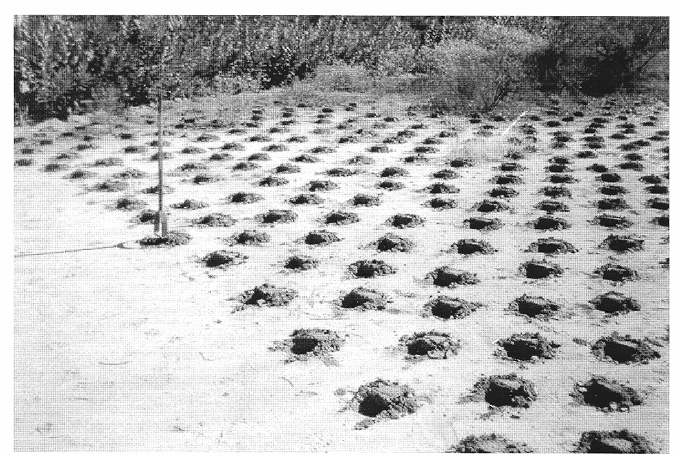Dr. Robert M.Dixon
Using the heavy duty Seymour Garden Hoe, either water shedding (runoff) or water
The water shedding area is prepared as follows:
1) Uproot all vegetation with the hoe.
2) Scatter the uprooted plants over the water absorbing area to form a mulch or add it to the existing mulch.
3) Level (smooth) the soil surface with the hoe blade.
4) Tamp the soil surface with back side of the blade.
5) Over time, maintain the soil free of plant litter and vegetation so that rainfall can seal the soil surface to enhance runoff.
Another essay found at imprinting.org details the hand hoe method for preparing the water absorbing area.
The water shedding area is essentially a desertified area, whereas the water absorbing area is a revegetated area according to other publications available at the website: imprinting.org. This process of patchy vegetation often occurs naturally in the Desert Southwest with the barren areas contributing resources to the adjacent vegetated areas. Resources captured by the vegetation often are a result of one-way raindrop splashing. Water and soil splash into the vegetation but not out. Vegetation also captures resources from wind slowed by the roughness provided by plant structures. So the shedding/absorbing approach with the hand hoe is to a large extent directed to duplicating a natural process found in the desert. The relative size of the water shedding and absorbing areas will depend on such factors as climatic aridity and the moisture needs of the garden or farm plants being grown. The size of the shedding area should increase with decreasing precipitation and increasing plant water needs. Other factors such as the water holding capacity of the imprinted soil should also be considered. This factor rises with time and the increasing storage of soil carbon. This approach to farming and gardening is appropriate for the labor intensive cultures found in Africa, China, Haiti, India and elsewhere especially in dryland areas with advanced land desertification or degradation. Desertified land can once again become productive and profitable.
For more information see imprinting.org and check the Internet for other sources of heavy duty eye-hoes that are similar to the Seymour hoe.
 Eyehoe Imprints
Eyehoe Imprints
